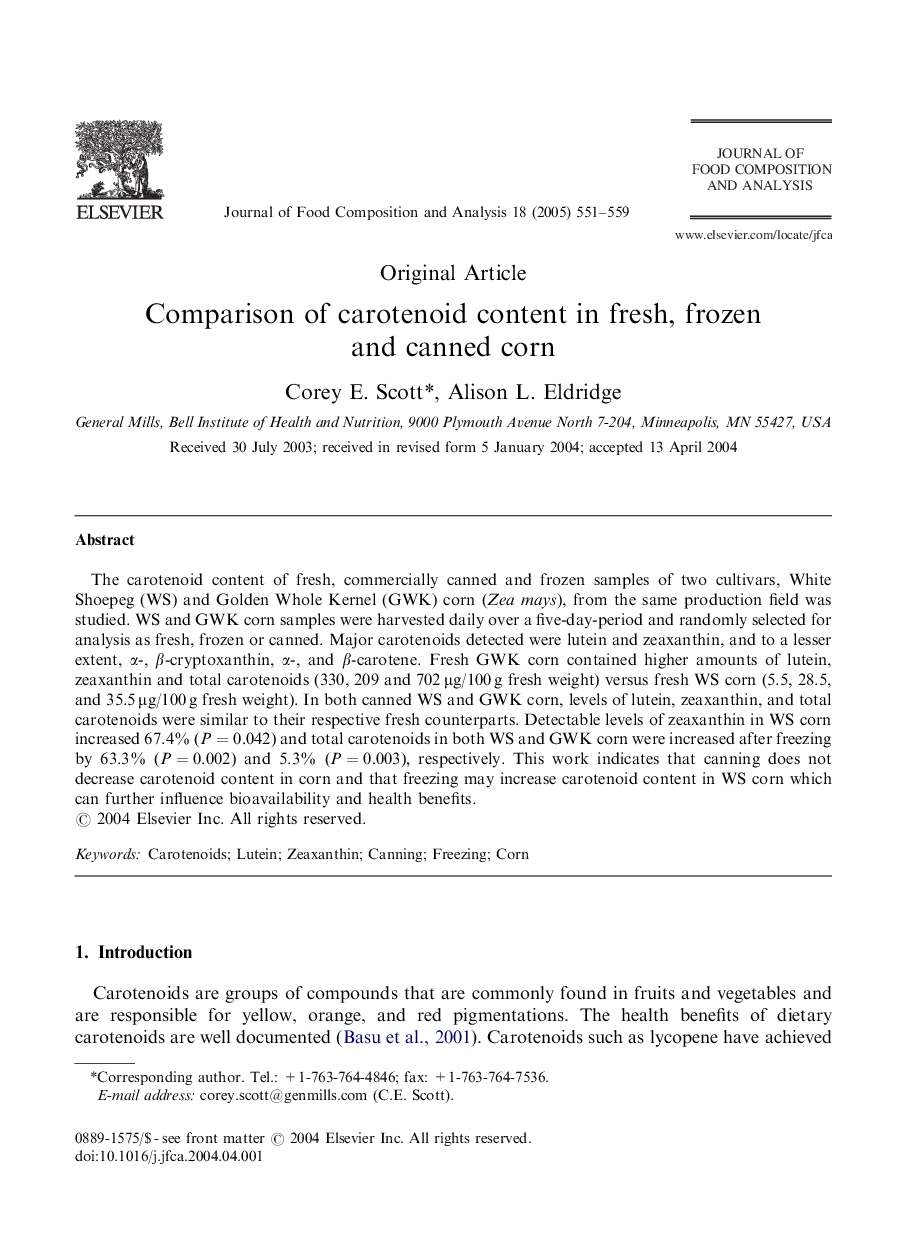| Article ID | Journal | Published Year | Pages | File Type |
|---|---|---|---|---|
| 10552889 | Journal of Food Composition and Analysis | 2005 | 9 Pages |
Abstract
The carotenoid content of fresh, commercially canned and frozen samples of two cultivars, White Shoepeg (WS) and Golden Whole Kernel (GWK) corn (Zea mays), from the same production field was studied. WS and GWK corn samples were harvested daily over a five-day-period and randomly selected for analysis as fresh, frozen or canned. Major carotenoids detected were lutein and zeaxanthin, and to a lesser extent, α-, β-cryptoxanthin, α-, and β-carotene. Fresh GWK corn contained higher amounts of lutein, zeaxanthin and total carotenoids (330, 209 and 702 μg/100 g fresh weight) versus fresh WS corn (5.5, 28.5, and 35.5 μg/100 g fresh weight). In both canned WS and GWK corn, levels of lutein, zeaxanthin, and total carotenoids were similar to their respective fresh counterparts. Detectable levels of zeaxanthin in WS corn increased 67.4% (P=0.042) and total carotenoids in both WS and GWK corn were increased after freezing by 63.3% (P=0.002) and 5.3% (P=0.003), respectively. This work indicates that canning does not decrease carotenoid content in corn and that freezing may increase carotenoid content in WS corn which can further influence bioavailability and health benefits.
Related Topics
Physical Sciences and Engineering
Chemistry
Analytical Chemistry
Authors
Corey E. Scott, Alison L. Eldridge,
